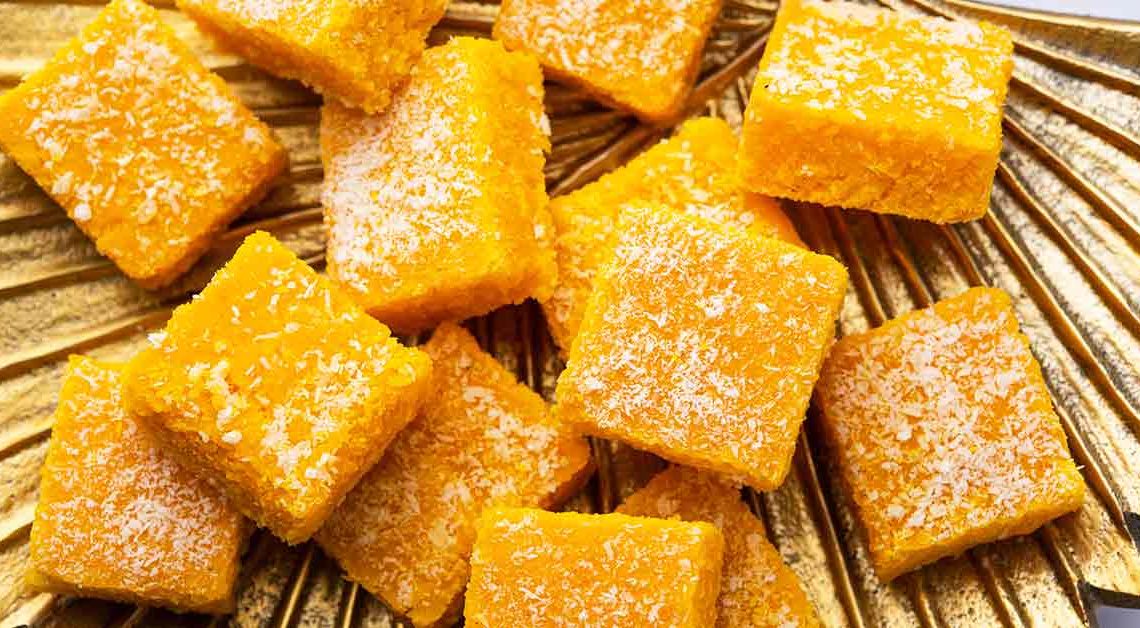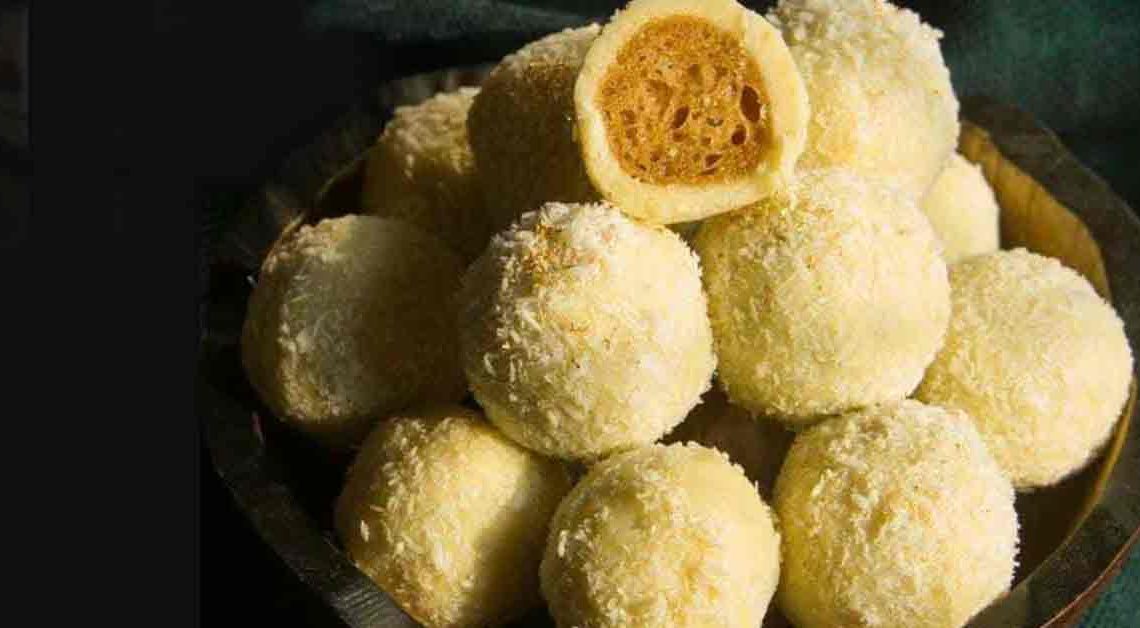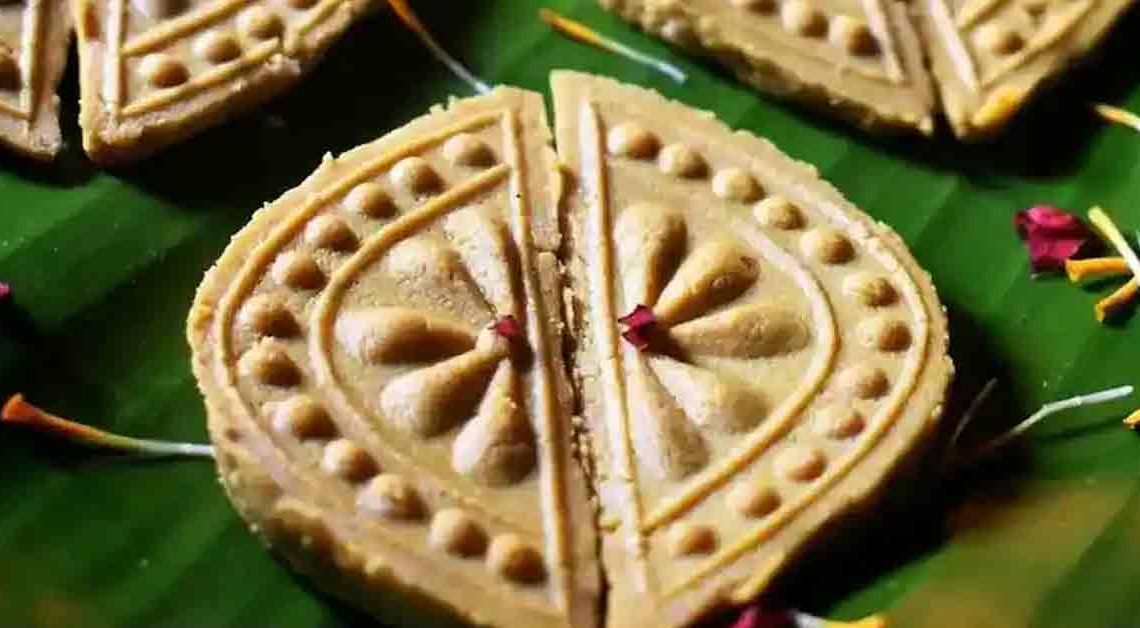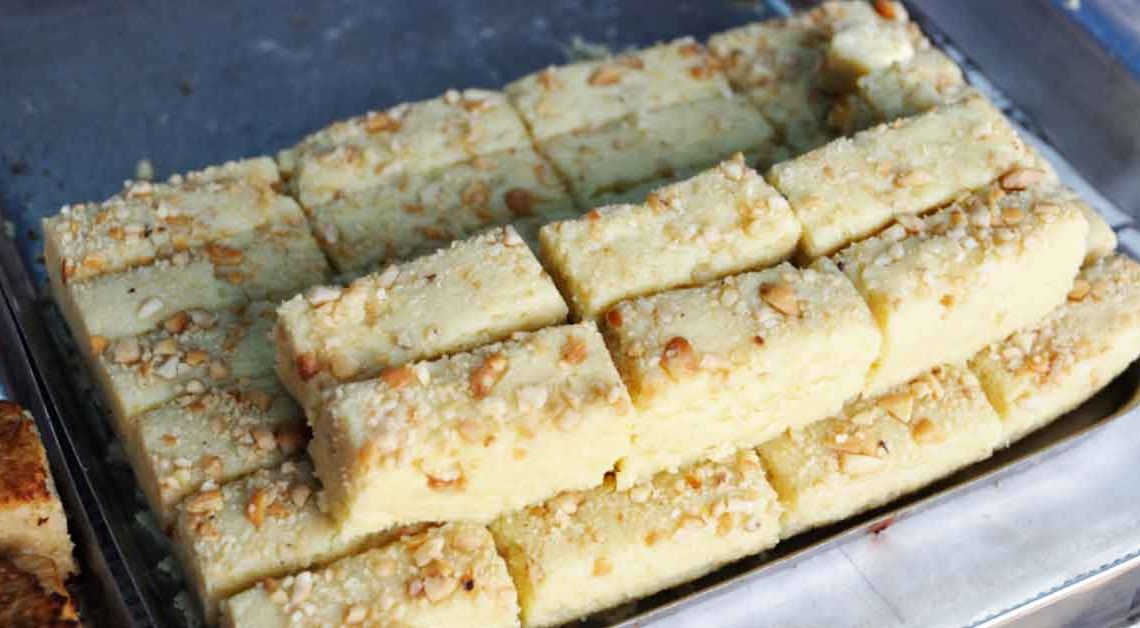Sweet End to a delicious Day: Coconut Barfi

Embark on a delectable journey to the tropics with our newest culinary adventure by Mithainama! – Coconut Barfi Delights! Unveil the secrets of this timeless Indian dessert that transports your taste buds to sun-kissed beaches and swaying palm trees.
Indulge in the rich history and cultural significance of this sweet masterpiece, which has graced festive celebrations and family gatherings for generations. We delve into the origins of this mouthwatering delight, tracing its roots through centuries of tradition and innovation.
Let’s cocoon ourselves in the world of Coconut Barfi ecstasy – where tradition meets innovation, and every bite tells a story!
Origin of Coconut Barfi
The origin can be traced back to the rich culinary heritage of India. Barfi, also known as “burfi,” is a traditional Indian sweet that comes in various flavors and forms, with coconut being one of the most beloved variations.
Its roots are in the Indian subcontinent, where coconuts have been a staple ingredient for centuries. Coconuts are abundant in tropical regions, and their versatile nature lends them to a wide range of culinary applications.
Over time, variations of nariyal barfi have emerged, incorporating modern twists such as the addition of nuts, dried fruits, and even chocolate. Despite these innovations, the essence of it as a traditional and cherished sweet remains intact, reflecting the cultural heritage and culinary creativity of India.
In essence, coconut barfi is not just a dessert; it’s a manifestation of the cultural and gastronomic diversity that India has to offer, carrying with it the flavors and traditions that have been passed down through generations.
History of Coconut Barfi
The history is intertwined with the rich tapestry of Indian culinary traditions and cultural heritage. While the exact origins of this delightful sweet treat may not be well-documented, its evolution over time reflects the diverse influences and innovations that have shaped Indian cuisine.
Coconut, a tropical fruit abundant in the coastal regions of India, has been a staple ingredient in Indian cooking for centuries. Its versatile nature led to the creation of various coconut-based dishes, including sweets like coconut barfi.
With the passage of time, it continued to evolve. Modern variations may include innovative ingredients, presentation styles, and even fusion with other cuisines. However, the heart of barfi remains rooted in tradition, serving as a link to the past and a source of cultural pride.
The history is a journey through the centuries, showcasing the creativity, flavors, and traditions that have shaped Indian culinary culture. From its humble origins as a regional sweet to its status as a beloved delicacy, coconut barfi’s story is one of taste, tradition, and the art of sweet indulgence.
Cultural Significance
Nariyal barfi holds a significant place in Indian culture, transcending its role as a delectable sweet treat to become a symbol of tradition, celebration, and communal bonding. Its cultural significance is deeply rooted in various aspects of Indian society and customs.
Festive Celebrations: It is often prepared and savored during festivals and special occasions. It is a staple at celebrations like Diwali (Festival of Lights), Raksha Bandhan (Sibling Bonding), Eid, and weddings. Its presence on these occasions not only adds sweetness to the festivities but also symbolizes the sharing of joy and happiness with loved ones.
Religious Offerings: In many Indian traditions, sweets hold a sacred place as offerings to deities during prayers and rituals. Coconut barfi, with its rich flavor and aroma, is often presented as a gesture of devotion and gratitude. It serves as a way of seeking blessings and divine favor.
Social Bonding: The process of making often involves a collective effort, bringing families and communities together. Elders share their knowledge and techniques with younger generations, creating opportunities for intergenerational bonding. Cooking and sharing coconut barfi can strengthen family ties and reinforce a sense of togetherness.
Where is Coconut Barfi Famous?
Nariyal barfi is famous and widely enjoyed across the Indian subcontinent, particularly in India and neighboring countries. It has a significant presence in Indian cuisine and culture, making it a popular sweet treat in various regions. Here are some places where it is particularly famous:
India: It is a beloved traditional sweet across India. It is prepared and enjoyed in various states, each adding its own regional touch to the recipe. States like Maharashtra, Gujarat, Kerala, Tamil Nadu, and West Bengal are known for their distinct styles of barfi, often incorporating local flavors and ingredients.
Bangladesh: In Bangladesh, its, known as “Narkel Naru,” is a popular sweet made during festivals and celebrations. It’s made using grated coconut and sugar, similar to its Indian counterpart.
Sri Lanka: In Sri Lanka, coconut-based sweets are an essential part of the culinary culture. While not identical to Indian barfi, Sri Lankan coconut-based sweets share similarities and are enjoyed during festive occasions.
Interesting Facts and Trivia
- Barfi has a historical royal connection. It is said that this sweet delicacy was a favorite among Indian royalty and was often prepared as a special treat for kings and queens during ancient times.
- The process of making it involves transforming a few simple ingredients into a delightful sweet through careful cooking and blending. It’s a wonderful example of how culinary alchemy can turn basic elements into a mouthwatering masterpiece.
- It is often garnished with edible silver or gold foil known as “varak.” This ornate decoration adds a touch of luxury and elegance to the already exquisite sweet.
- With the advent of fusion cuisine, barfi has been reinvented in various parts of the world. Chefs and culinary enthusiasts have experimented with incorporating flavors like chocolate, coffee, and even exotic fruits into barfi recipes.
- Due to its sugar content and preparation method, it has a relatively long shelf life compared to some other Indian sweets. This makes it a practical choice for gifting and sharing during festivals.
Did You Know?
Did you know? Indulging in the delightful world of coconut barfi doesn’t just satisfy your sweet cravings – it also offers a sprinkle of health benefits!
- Coconut, the star of this delectable treat, brings a dose of nourishing goodness. It’s rich in healthy fats, particularly medium-chain triglycerides (MCTs), which provide a quick source of energy and support metabolism. These MCTs are believed to boost brain function and promote fat loss.
- Moreover, it contains dietary fiber, which aids digestion and helps maintain a healthy gut. The infusion of aromatic spices like cardamom adds more than just flavor – it can potentially aid digestion and offer anti-inflammatory properties.
- But that’s not all! The saffron often used to garnish coconut barfi adds more than just a burst of color; it may have mood-enhancing qualities and potential antioxidant benefits.
- So, savor each bite of coconut barfi not only for its heavenly taste but also for the nutritional perks it brings. Remember, this cherished Indian delight offers a fusion of pleasure and well-being in every square!







